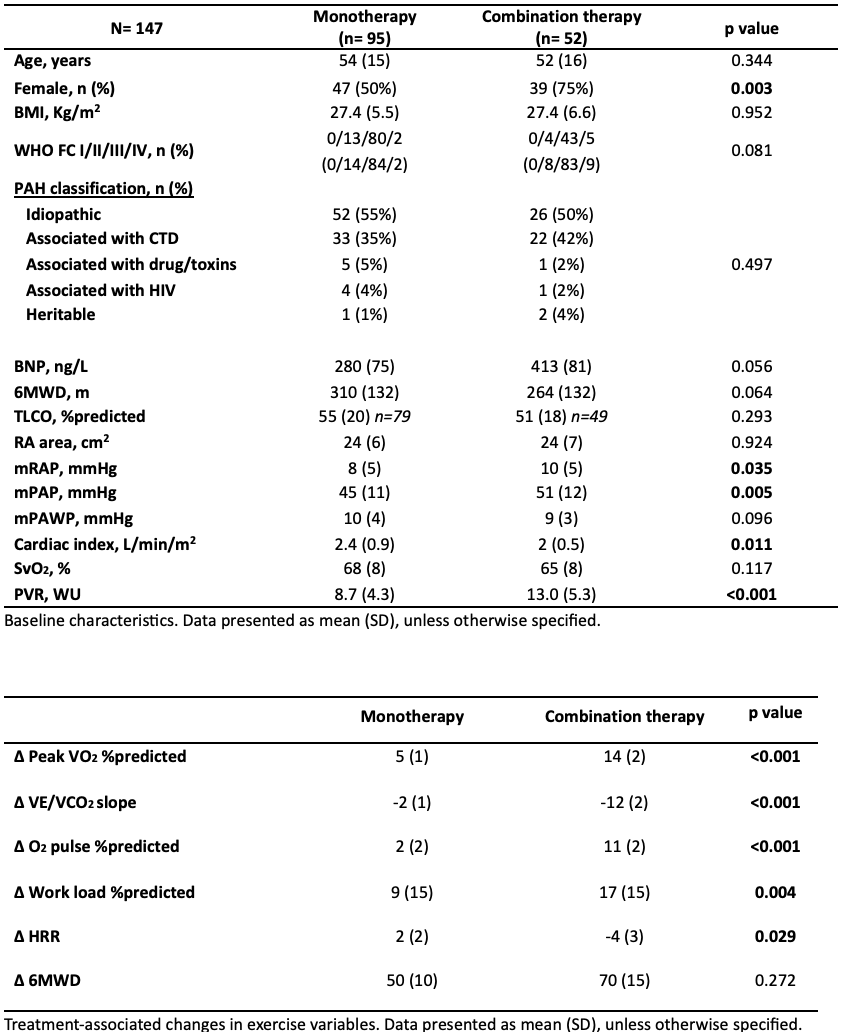Abstract
Introduction: Oxygen consumption at peak (PeakVO2) and the ventilatory equivalent for carbon dioxide slope (VE/VCO2 slope) are prognostic markers in PAH (Humbert M et al. Eur Heart J 2023;61:2200879). However, little is known on the prognostic role of their treatment-associated changes, and if upfront combination therapy leads to greater improvements than monotherapy.
Aims: Define the magnitude of change in CPET variables after therapy in a large incident cohort of PAH patients, and assess whether there are differences between upfront monotherapy vs combination therapy.
Methods: Data of 147 PAH patients were collected from a prospective database. Included patients underwent CPET before and at the first reassessment after therapy.
Results: Five months after treatment, upfront combination therapy yielded significantly greater improvements in PeakVO2, VE/VCO2 slope and O2 pulse, but not in 6MWD. Treatment-associated improvements in PeakVO2, VE/VCO2 slope and O2 pulse predicted survival, while changes in the 6MWD did not. Younger age and combination therapy were associated with a larger improvement in PeakVO2.
Conclusions: CPET is a noninvasive test able to shed light on the pathophysiological mechanisms underlying response to therapy in PAH. The emerging prognostic role of treatment-associated changes in PeakVO2, VE/VCO2 slope and O2 pulse warrant further investigation.
